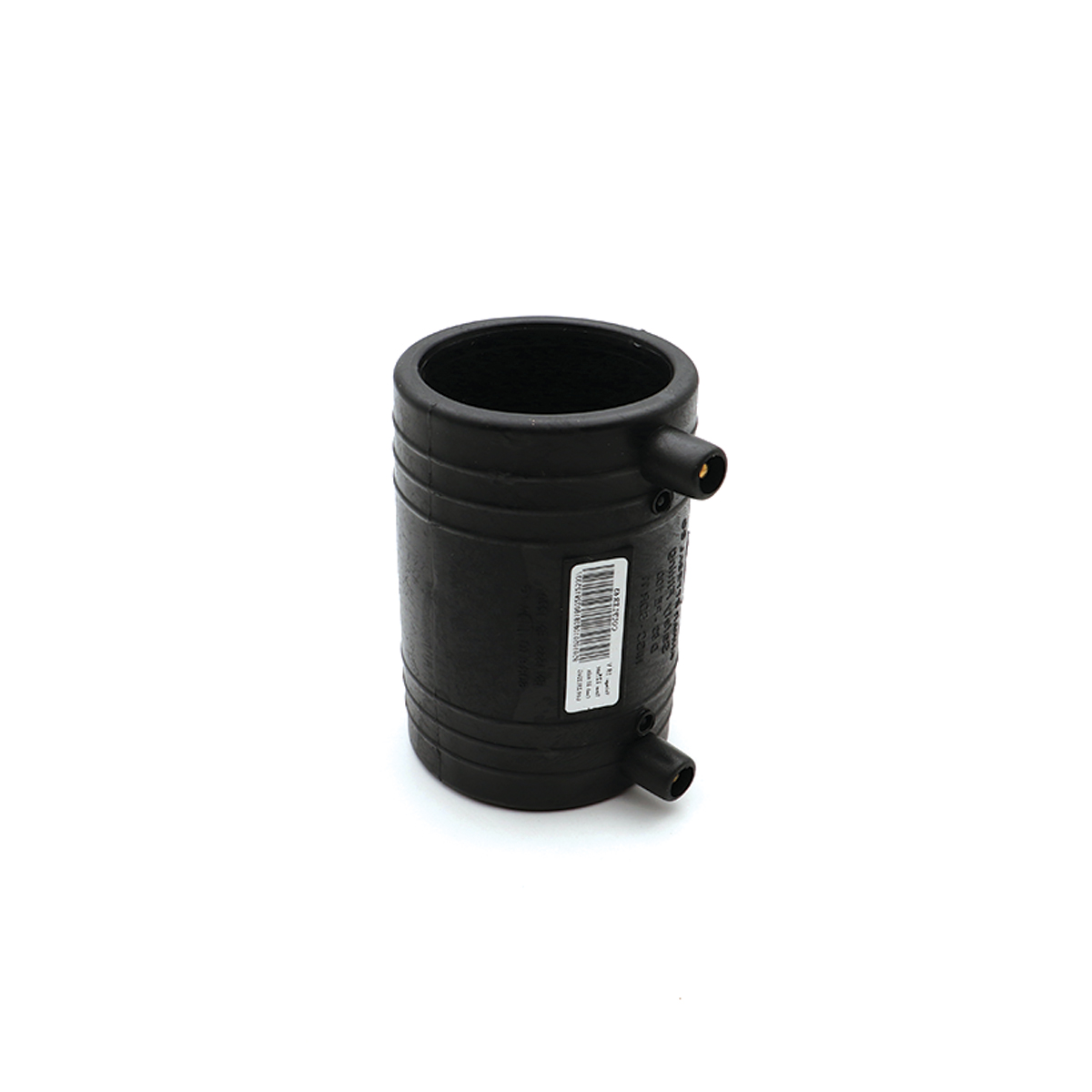Electrofusion couplers are among the most reliable methods for joining polyethylene pipes in pressurized fluid transmission lines; by welding the metallic elements embedded in the socket’s inner wall, the pipe and fitting are integrated so thoroughly that the joint practically achieves the pipe body’s strength. This technology is regarded as the reference standard in sensitive urban and industrial gas and water networks, especially in areas that require stability against ground vibrations and temperature changes. Below, we comprehensively review the product’s technical, standard, and execution aspects.
Structure and Operating Principles
An electrofusion coupler is made of a high-density polyethylene (HDPE) body inside which electrical resistance windings (heating coils) are embedded. After inserting the pipes into both sides of the coupler and locking with a clamp, a controlled electrical current is applied to the coils; within seconds the electrical energy turns into heat and brings both the socket’s inner surface and the pipe’s outer surface—both polyethylene—to the softening point. Applying uniform pressure and maintaining heat creates the so-called “fusion zone,” which, after cooling, forms a homogeneous, seamless joint.
Technical and Operational Advantages
- Absolute sealing at operating pressures above 16 bar, even with corrosive or particle-laden fluids.
- Mechanical integrity; tensile and bending resistance at the joint virtually approaches that of the parent pipe.
- Safety against gas leakage; the main reason this method is mandated in IGS, ISO 4437-4, and EN 1555 gas sections.
- Reduced workspace requirement; unlike butt fusion, there is no need for long pipe layout or large maneuvering space.
- Traceability; most modern couplers include a barcode or RFID that records batch data, operator ID, and welding parameters.
Key Standards and Approvals
- ISO 21307: Three procedures for electrofusion welding (standard pressure and time).
- ISO 4427-3 / ISO 4437-3: Requirements for polyethylene fittings for water and gas.
- EN 12201-3: Execution specifications for pressurized water supply systems in Europe.
- ASTM F1055: Electrofusion joint test method in the North American market.
Table 1 – Common Size Range and Nominal Pressure of Electrofusion Couplers
| Outer Diameter (mm) | SDR 11 – Operating Pressure 16 bar | SDR 17 – Operating Pressure 10 bar | SDR 21 – Operating Pressure 6 bar |
|---|---|---|---|
| 20–63 | ● | ● | ● |
| 75–110 | ● | ● | ● |
| 125–180 | ● | ● | ○ |
| 200–315 | ● | ○ | ○ |
| 355–400 | ○ | ○ | ○ |
● = Available ○ = Made-to-order or limited
Comparison with Other Joining Methods
In projects where execution speed and safety are priorities, the choice of joining method is decisive.
Table 2 – Comparative Assessment of Polyethylene Pipe Joining Methods
| Criterion → Method ↓ | Electrofusion | Butt Fusion | Threaded/Flanged | Mechanical Coupler |
|---|---|---|---|---|
| Installation time | Short | Medium | Long | Short |
| Required equipment | Medium | Bulky | Light | Light |
| Maximum pressure | Very high | Very high | Medium | Low–medium |
| Sensitivity to operator error | Low | High | Medium | Medium |
| Workspace requirement | Low | High | High | Low |
| Total execution cost | Medium | Medium | High | Medium |
Practical Installation and Quality Control Guide
- Surface preparation: Using an automatic scraper, remove 0.2–0.3 mm from the pipe surface to eliminate the oxidized layer and contamination.
- Final cleaning: With 99% isopropyl alcohol and a lint-free wipe, degrease the surface; never use aromatic solvents.
- Pipe grading: With a ring gauge, verify diameter compliance with the SDR standard.
- Welding parameters: Apply voltage (typically 40 V) and time (size-dependent; from 30 seconds to 8 minutes) per the manufacturer’s datasheet.
- Ambient temperature control: For diameters above 250 mm, welding at 5 to 30 °C is recommended; in cold weather, wrap temporary thermal insulation around the socket.
- Cooling period: Do not move the coupler until the cooling time is complete (typically twice the welding time).
- Pressure test: At least 1.5× the service pressure for 30 minutes; a pressure drop greater than 2% is not acceptable.
Maintenance and Periodic Inspection
- Visual inspection every six months for gas lines: cracks, discoloration, or slight corrosion on the coil wire are signs for replacement.
- Pressure monitoring: Record operating pressure with digital loggers; sudden fluctuation can indicate secondary leakage or a damaged coupler.
- Ultrasonic testing for diameters above 315 mm: identifies incomplete fusion within the material.
Price-Influencing Factors
- Diameter and SDR: Consumables and coil power rise exponentially with increased diameter and decreased SDR (greater wall thickness).
- Pressure class: Gas couplers (yellow) usually have higher production costs than water types (blue/black).
- Traceability technology: Presence of RFID and compliance labels adds to final price.
- Country or quality of raw materials: PE100+ polyethylene resin with MRS 10 classification is the primary cost driver.
Broad Applications
- Urban networks for natural gas and LPG
- Potable and industrial water transmission and distribution lines
- Hydro-supply systems for mining and marine applications
- Process units in chemical and petrochemical industries
- Fire-water systems in refineries
- Drainage and transfer of acidic or saline wastewater
Tamam Baha Special Paragraph
As one of the reputable distributors of electrofusion couplers in the Iranian market, Tamam Baha offers a wide range of sizes and pressure classes with guaranteed authenticity for contractors and industries; fast delivery across Iran and neighboring countries, reliable continuity of supply, and pre-purchase technical consultation are among the company’s hallmark services.



